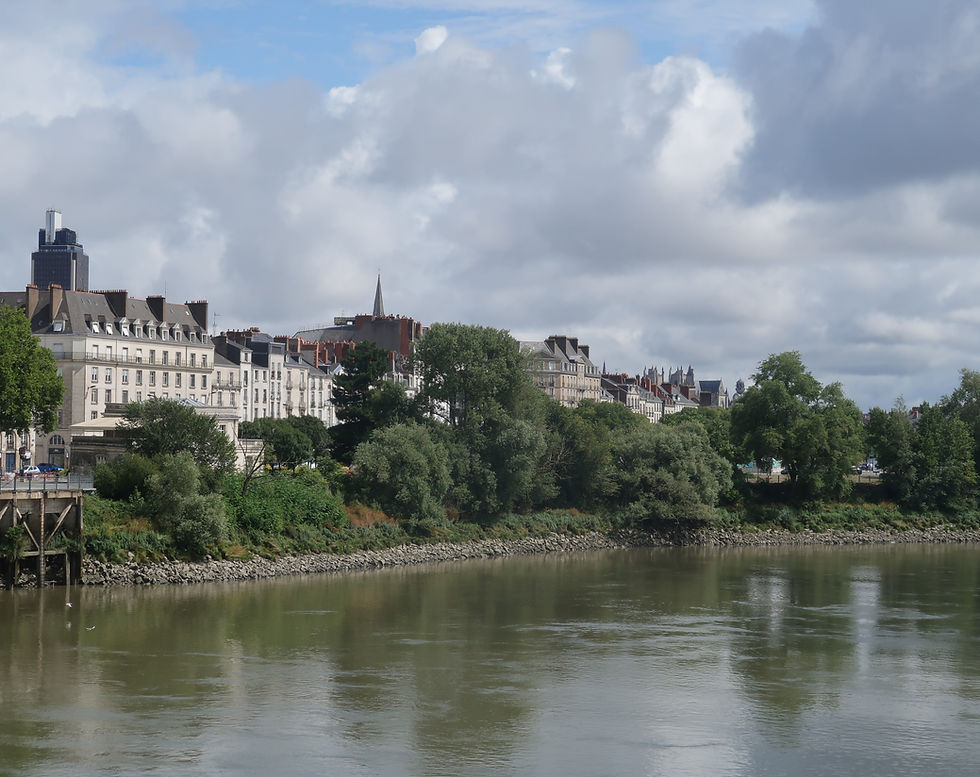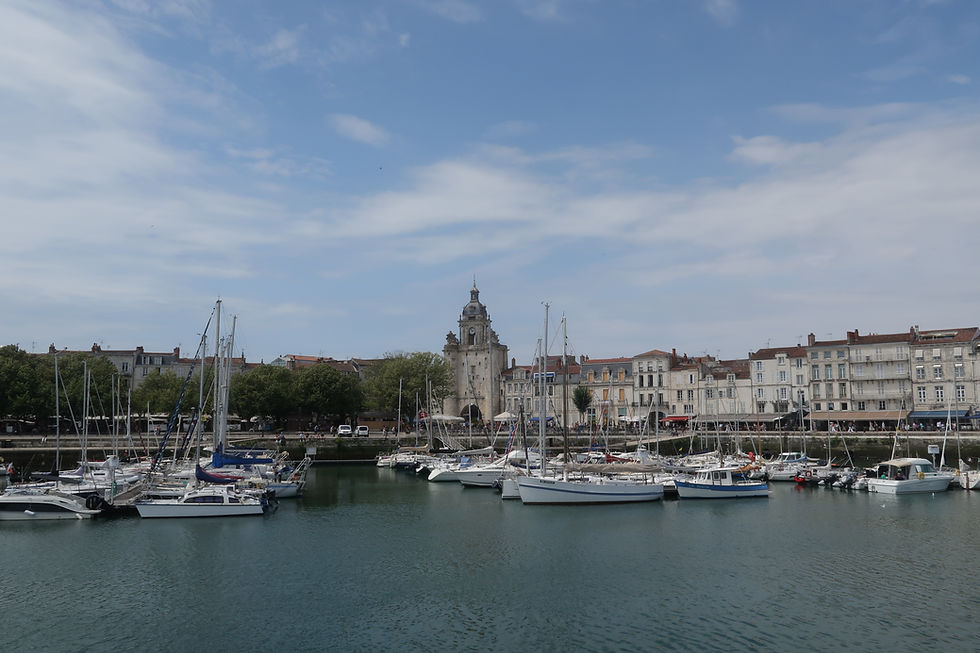Extraordinary museums: a selection to stir your soul
- Karyn Farrell
- Jan 20, 2017
- 8 min read
Updated: Oct 22
Louisiana Museum of Modern Art, Denmark
Located approximately 40 kilometers from Copenhagen and with views of Sweden across the water, Louisiana Museum is perfectly integrated into the natural environment, making the best possible use of its coastal location and its site. The grounds are dotted with diverse sculpture from artists such as Miró, Calder and Dan Graham, while wall to ceiling windows frame the spectacular natural environment and sculpture beyond.
The museum has an incredible permanent collection of work from 1945 to present day showcasing all art forms but with a particular emphasis on painting and sculpture. Of particular note is the collection of Danish artists including Per Kirkeby and Asger Jorn.
It also hosts approximately six to ten exhibitions annually. Previous exhibiting artists include superstars of the international art world like Marina Abramovic, Louise Bourgeois, David Hockney, Lucien Freud, William Kentridge and Barnett Newman, to name but a few.
We were lucky enough to catch the extraordinary exhibition of American artist Tara Donovan, her first European show. Tara uses simple everyday objects like straws, toothpicks and buttons to create monumental works of great intrigue and beauty, experimenting with materials to challenge the viewer’s interpretation of what they are seeing. What looks soft and fluffy from a distance is sharp and spiky up close. What looks like a wall of snow is actually an undulating wall of drinking straws. In the hands of a lesser artist it could have been gimmicky, but
It’s an outstanding museum and one to enjoy at your leisure. It's a worthy daytrip from Copenhagen and there's a restaurant and café on site.
Getting there: there are frequent train connection from Copenhagen’s Central Station: direction Helsingør.
Louisiana Museum, Gl Strandvej 13, 3050 Humlebæk, Denmark
Guggenheim Museum, Bilbao, Spain
When art and architecture combine... With a collection housed in one of the world's most remarkable buildings, the Guggenheim Museum has had a huge role to play in the rejuvenation of the city of Bilbao. Designed by the architect extraordinaire Frank Gehry and opened in 1997, this extraordinary architectural spectacle draws tourists travel in their droves every year.
In summer, the sun shimmers on the titanium and steel structure creating a sensation of movement, as if the building is floating on water. At night, the warm lights of the building are reflected in the surrounding pool below. The design is wild and full of expression, yet the building sits comfortably in its environment on the banks of the Nervión river in the old industrial part of the city.
It has that wow factor on first approach, its entrance plaza dominated by Jeff Koons giant ‘Puppy‘ – a giant real live sculpture made from bedding plants which are literally still growing.
There's a world of art to explore before crossing its threshold. Dotted around its perimeter are monumental pieces by some of the world's most renowned sculptors including Anish Kapoor, Jeff Koons and Louise Bourgeois. Kapoor's Tall Tree and the Eye is of a series of mirrored orbs reflecting various parts of the buildings, while distorting your sense of space. Koons' multicoloured stainless steel Tulips is a fun piece - a series of balloon flowers made creating some fantastic reflections on all sides.
Visitors can walk beneath Louise Bourgeois' monumental spider Maman and immerse themselves in the strange Fog Sculpture of Fujiko Nakaya: in timed intervals the entire pavilion is enveloped in fog. an unsettling experience on a sunny day.
All that before you even go inside! Start in the towering glass atrium and work your way up. The permanent collection include works by Mark Rothko, Anselm Kiefer, Alex Katz and the Pop artists, and hosts a strong collection of work by Basque sculptors Eduardo Chillida and Jorge Oteiza.
Take time to get completely tripped out in Richard Serra’s site-specific The Matter of Time, a series of ellipses, spirals and spheres in his trademark steel. Visitors are invited to walk through and around them as the heights drop and rise and as the width narrows, then widens, which has a very disconcerting and dizzying effect. The Serra piece is permanent but other rooms of works in the permanent collection can close to accommodate temporary shows. Check online before you go.
Guggenheim Museum, Abandoibarra Etorb., 2, Abando, 48009 Bilbao, Bizkaia, Spain
Fondation Maeght, Saint-Paul-de-Vence, Provence
Founded in the 1960s by Marguerite and Aimé Maeght, the museum showcases modern and contemporary art in all its forms and is France's first independent art foundation. The couple were major players on the art scene, and friends with many of the giants of the modern movement including Joan Miró, Alberto Giacometti and Marc Chagall. The relationships they'd formed were the reason the museum came into existence.
Upon entering, visitors encounter the sculpture garden with monumental works by the likes of Calder, Chillida and Hepworth. On the bookshop wall is a mosaic by Marc Chagall. The St Bernard chapel is worth a look for its gorgeous stained-glass windows by Raoul Ubac and George Braque.
The building itself is undoubtedly modern but the warm terracotta colours and traditional materials ensure it doesn't seem at odds with the natural environment. Instead everything seems to flow together perfectly with galleries and courtyards at varying heights and levels, and there are access points to the outdoor spaces everywhere. The Miró labyrinth is a highlight and a Zen-like space with its turquoise pools, sculpture trail and a backdrop of mountains and trees. The Giacometti courtyard is also a must-see, overhung by the most dramatic architectural feature, the distinctive white catchment roof. The views of the surrounding landscape are pretty spectacular from the upper levels.
Their permanent collection includes work by artists such as Chagall, Miró, Ellsworth Kelly, Pierre Bonnard, Kandinsky and Braque but these may not always be on view due to recurrent temporary exhibitions.
It’s a wonderful place in a beautiful part of Provence and shouldn’t be missed.
Fondation Maeght, 623 Chem. des Gardettes, 06570 Saint-Paul-de-Vence, France
Museo Oteiza, Navarra, Spain
An off-the-beaten-track gem in the heart of Spain's Navarra region, the museum houses an outstanding collection of the work of Jorge Oteiza, a prolific Basque sculptor who died in 2003. If you've travelled through Basque country or spent time in hometown of San Sebastian, it's likely you will have encountered at least one of his public sculptures.
Architecturally, it's an outstanding museum, with large picture windows framing views of rolling hills and mountains. The building is modern with sharp geometrical angles of the roof reminiscent of his later work. However the contrasting warm stonework and terracotta hues of the walls soften the effect. The interior of the museum is striking and the lighting, both natural and artificial, shows off his work in the best possible way.
The museum holds the most comprehensive collection of his work in the world with over 1650 sculptures, 2000 experimental works, his own personal library, and a collection of drawings and collages. In 1992, the artist donated all of his works to the city of Navarra. He died in 2003 and as requested in his will, this museum was opened to host and document his (extremely prolific) life’s work. Both he and his wife are buried in the grounds of the museum.
Despite being one of the most significant figures in 20th Century Basque art, you won’t find crowds of people here on your visit. It’s a little off the beaten track (10 kilometres from Pamplona), and you’ll most likely need a car, so it doesn’t get the same throng of visitors as you might in a city -a massive plus in my book. Even in the height of July, there was only a small group of people visiting so you really get to spend time with each work and enjoy the peaceful setting. Bear in mind that it doesn’t have a café so make sure to eat before you arrive.
Museo Oteiza, Calle la Cuesta, 7, 31486 Alzuza, Navarra, Spain
MoMA, New York
Located on West 53rd St, south of Central Park, the collection has to be seen to be believed. Dreamed of seeing ‘Starry Night’ by Van Gogh? Yep they have it. And yes it’s even more incredible in reality. They have a huge collection of Cézannes, an even bigger collection of Picasso’s, including drawings, but most significantly MoMA is home to his iconic and at the time extremely controversial ‘Les Demoiselles d’Avignon’ from 1907.
And then there’s the American artists: Rothko, Pollock, Alex Katz, the Pop artists… There are too many to mention here but you can probably imagine the standard at this point. It’s astounding. I recommend having a good brunch beforehand, and get yourself caffeined up. You’ll need your energy. The collection is enormous but you won’t want to miss anything. Pre-booking is recommended.
MoMA, 11 W 53rd St, New York, NY 10019, United States
Musée de l'Orangerie, Paris
A must-see on visiting Paris, the curved walls hold what can only be described as Monet’s greatest masterpiece – his frieze of eight panels depicting the Nymphéas or Water Lilies cycle which occupied the final three decades of his life. Donated by the artist to the French State in 1922, they have been on display at the Musée de l’Orangerie since 1927, installed exactly to the artist’s specifications.
The series of paintings was inspired by the water garden at his Giverny estate in Normandy. The oval-shaped room creates a continuous frieze, and the monumental panels mean you are completely immersed in his landscape of water lilies, weeping willows and pools of water. As you move from painting to painting, the light changes; the season changes; the mood changes. The room is lit by natural light from above, also to Monet’s specification, and the works are carefully placed to take advantage of this: his sunrise scenes are strategically placed to the east of the building, and the scenes of sunset to the west. It’s a very special place.
And that’s not the whole Orangerie experience. They also have an incredible permanent collection featuring 146 works from the 1860s to the 1930s including outstanding paintings by Cézanne, Matisse, Modigliani and Picasso, to name but a few.
Musée de l'Orangerie, Jardin des Tuileries, 75001 Paris, France
Solomon R. Guggenheim, New York
A second entry from the Big Apple, chosen for its astonishing architecture, both on the exterior and interior. Designed by world-renowned architect Frank Lloyd Wright, it’s situated on Manhattan's Upper East Side, opening to the public in 1959.
It’s truly a unique way to experience an exhibition – in the round. The spiral ramp starts at the ground floor and continues all the way to the domed ceiling. As you follow the gently sloping ramp, you are treated to an unrivaled perspective: not only of the immediate artwork, but of the entire exhibition space, with its multiple levels, all at once.
‘I want to believe‘, an intensely immersive and unsettling exhibition by acclaimed Chinese superstar artist Cai Guo Qiang used the space to extraordinary effect. The central atrium sees nine white cars suspended from the ceiling: a step-by-step representation of a car bomb - a pretty explosive start to any show.
As visitors follow the spiral ramp around, they encounter stuffed tigers suspended from the air, pierced by arrows and squirming in agony; on the next level they are greeted by an army of terracotta peasants under threat from advancing soldiers. The most astonishing feat was the enormous pack of wolves advancing up the ramp and chasing each other above the visitors heads, but coming to a nasty end, crashing against a pane of glass.
Solomon R. Guggenheim Museum, 1071 5th Ave, New York, NY 10128, United States



































































































































Comments